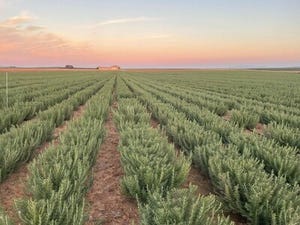New technologies needed for increasing livestock production
Collaborative global research teams must strive to come up with new ways of developing and adapting modern concepts in biotechnology.

In the next 30 years, the world’s population is projected to grow by nearly 2 billion and will become more urbanized, with a more skilled workforce. The good news is that global prosperity and affluence will increase.
At the same time, the challenge will be a food supply that needs to be more than doubled in order to meet the increasing demand. Specifically, the demand for animal-sourced foods will need to be more than doubled to meet the demands of the newly affluent.
At the 2014 Joint Annual Meeting of the American Dairy Science Association and the American Society of Animal Science, Donald Nkrumah with the Bill and Melinda Gates Foundation, Seattle, Wash., explained that with fewer and fewer people engaged in agriculture, and for the sake of the planet, animal production growth cannot continue to come from the deployment of more animals and land.
Some have argued that current organic systems may be for the rich and curious and could not produce enough food to feed the world in the future. Past technologies that allowed us to advance productivity may not be enough to bring about future intensification, especially for small holders who live in areas that require attention to climatic adaptability and disease resiliency, said Nkrumah. Instead, changes in total factor productivity will need to occur through significant changes in current techniques, he said.
To transform current near-subsistence small holder production systems, Nkrumah said technological innovation will be required to drive the needed sustainable productivity increases. That means collaborative global research teams must strive to come up with new ways of developing and adapting modern concepts in biotechnology to create the next-generation of animal genetics, health, and livestock nutrition systems. These technologies will then have to be deployed affordably through context-relevant mobile communication and digital platforms to increase accessibility.
About the Author(s)
You May Also Like



